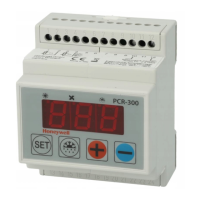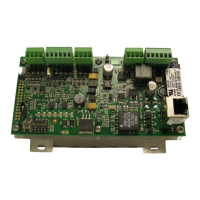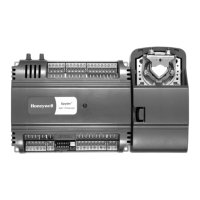Introduction
70-6925 125
Humidistats
and
Thermostats Controllers Sensors Relays Switches Actuators Valves Accessories
Engineering
Guide
Cross
Reference
INTRODUCTION
This section provides basic information on pneumatic control
systems and components commonly used to control equipment
in commercial heating and air conditioning applications. The
information in this section is of a general nature in order to
explain the fundamentals of pneumatic control. Some terms
and references may vary between manufacturers (e.g., switch
port numbers).
Pneumatic control systems use compressed air to operate
actuators, sensors, relays, and other control equipment.
Pneumatic controls differ from other control systems in several
ways with some distinct advantages:
— Pneumatic equipment is inherently proportional but can
provide two-position control when required.
— Many control sequences and combinations are possible
with relatively simple equipment.
— Pneumatic equipment is suitable where explosion haz-
ards exist.
— The installed cost of pneumatic controls and materials
may be lower, especially where codes require that low-
voltage electrical wiring for similar electric controls be
run in conduit.
— Quality, properly installed pneumatic equipment is reli-
able. However, if a pneumatic control system requires
troubleshooting or service, most building-maintenance
people have the necessary mechanical knowledge.
DEFINITIONS
Actuator: A mechanical device that operates a final control
element (e.g., valve, damper).
Authority (Reset Authority or Compensation Authority): A
setting that indicates the relative effect a compensation
sensor input has on the main setpoint (expressed in
percent).
Branchline: The air line from a controller to the controlled
device.
Branchline pressure (BLP): A varying air pressure signal from
a controller to an actuator carried by the branchline. Can go
from atmospheric to full main line pressure.
Compensation changeover: The point at which the
compensation effect is reversed in action and changes from
summer to winter or vice versa. The percent of
compensation effect (authority) may also be changed at the
same time.
Compensation control: A process of automatically adjusting
the control point of a given controller to compensate for
changes in a second measured variable such as outdoor air
temperature. For example, the hot deck control point is reset
upward as the outdoor air temperature decreases. Also
know as “reset control”.
Compensation sensor: The system element which senses a
variable other than the controlled variable and resets the
main sensor control point. The amount of this effect is
established by the authority setting.
Control point: The actual value of the controlled variable
(setpoint plus or minus offset).
Controlled variable: The quantity or condition that is
measured and controlled (e.g., temperature, relative
humidity, pressure).
Controller: A device that senses the controlled variable or
receives an input signal from a remote sensing element,
compares the signal with the setpoint, and outputs a control
signal (branchline pressure) to an actuator.
Differential: A term that applies to two-position devices. The
range through which the controlled variable must pass in
order to move the final control element from one to the other
of its two possible positions. The difference between cut-in
and cut-out temperatures, pressures, etc.
Direct acting (DA): A direct-acting thermostat or controller
increases the branchline pressure on an increase in the
measured variable and decreases the branchline pressure
on a decrease in the variable. A direct-acting actuator
extends the shaft on an increase in branchline pressure and
retracts the shaft on a decrease in pressure.
Discharge air: Conditioned air that has passed through a coil.
Also, air discharged from a supply duct outlet into a space.
See Supply air.
Final control element: A device such as a valve or damper
that acts to change the value of the manipulated variable.
Positioned by an actuator.
Main line: The air line from the air supply system to controllers
and other devices. Usually plastic or copper tubing.
Manipulated variable: Media or energy controlled to achieve a
desired controlled variable condition.
Measuring element: Same as sensing element.
Mixed air: Typically a mixture of outdoor air and return air from
the space.
Modulating: Varying or adjusting by small increments. Also
called “proportional”.
Offset: A sustained deviation between the actual system
control point and its controller setpoint under stable
operating conditions. Usually applies to proportional
(modulating) control.
Proportional band: As applied to pneumatic control systems,
the change in the controlled variable required to change the
controller output pressure from 3 to 13 psi. Usually
expressed as a percentage of sensor span.
Reset changeover: The point at which the compensation
effect is reversed in action and changes from summer to
winter or vice versa. The percent of compensation effect
(authority) may also be changed at the same time.
Reset control: A process of automatically adjusting the control
point of a given controller to compensate for changes in a
second measured variable such as outdoor air temperature.

